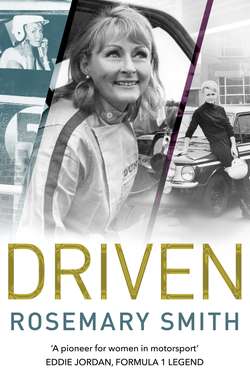Читать книгу Driven: A pioneer for women in motorsport – an autobiography - Rosemary Smith, Rosemary Smith - Страница 16
ОглавлениеCHAPTER 5
Revving up with Rootes
When I got back to Dublin I told my dad about meeting Norman Garrad and how I had refused his offer of working for him. My father never usually got annoyed, but this time he was furious and asked me, did I realise what an honour it was to have been asked to drive for Rootes? He told me that the Rootes Group was a famous British car manufacturer and a major motor dealer business, with offices in the West End of London and plants in the Midlands and the south of England. I realised from his reaction that maybe I should have paid Mr Garrad’s proposal a little more attention.
A few months later I received a letter from the Rootes Group, telling me that they were delighted that I was taking up Norman Garrad’s offer to join the team. My mother explained that she had written to Rootes’ headquarters in London, telling them that I had changed my mind and would be available to join them. My parents insisted this was a chance of a lifetime and I soon realised they were probably right.
Apparently, Norman Garrad had been behind me on the road when I was driving for Sally Anne, and a friend since told me that he is quoted in The Rally-Go-Round by Richard Garrett as saying: ‘She was pressing on very smartly and appeared to be the only one alive in the car. I stayed behind her for about two hours, by which time I realised that she had more than average ability.’ Norman was a shrewd and experienced businessman and saw the advantage of having this long-legged Irish girl sitting on the bonnet of one of his cars, or, even better, doing the driving. I was often referred to as the ‘blonde bombshell’. In his eyes, I was a dolly bird and potentially a great marketing tool too.
The aim of car manufacturers is to sell cars, and rallying and racing was one of the ways to get their message across: a pretty woman adorning their cars was always a help. One of Norman’s publicity stunts was to put my name down for Le Mans one year. The 24 Heures du Mans is one of the most prestigious automobile races in the world and on the entry list I was ‘R. Smith’ driving a Sunbeam Alpine. Norman knew full well that women weren’t allowed to drive in the race because in 1956 Annie Bousquet, an Austrian-born French driver, was killed in an accident when she lost control of her Porsche 550 in the early stages of the 12 Heures de Reims. The negative publicity and public outcry caused the French motorsport authorities to prohibit women from entering major races, and the Automobile Club de l’Ouest, organisers of the Le Mans 24 Heures, banned female drivers from competing in their race. Yet previously, in June 1955, a disaster at Le Mans occurred when Pierre Levegh crashed and large fragments of debris flew into the crowd, killing 83 spectators and injuring many more. Despite this appalling accident, the 24 Heures du Mans went on uninterrupted, year after year, but without women drivers.
